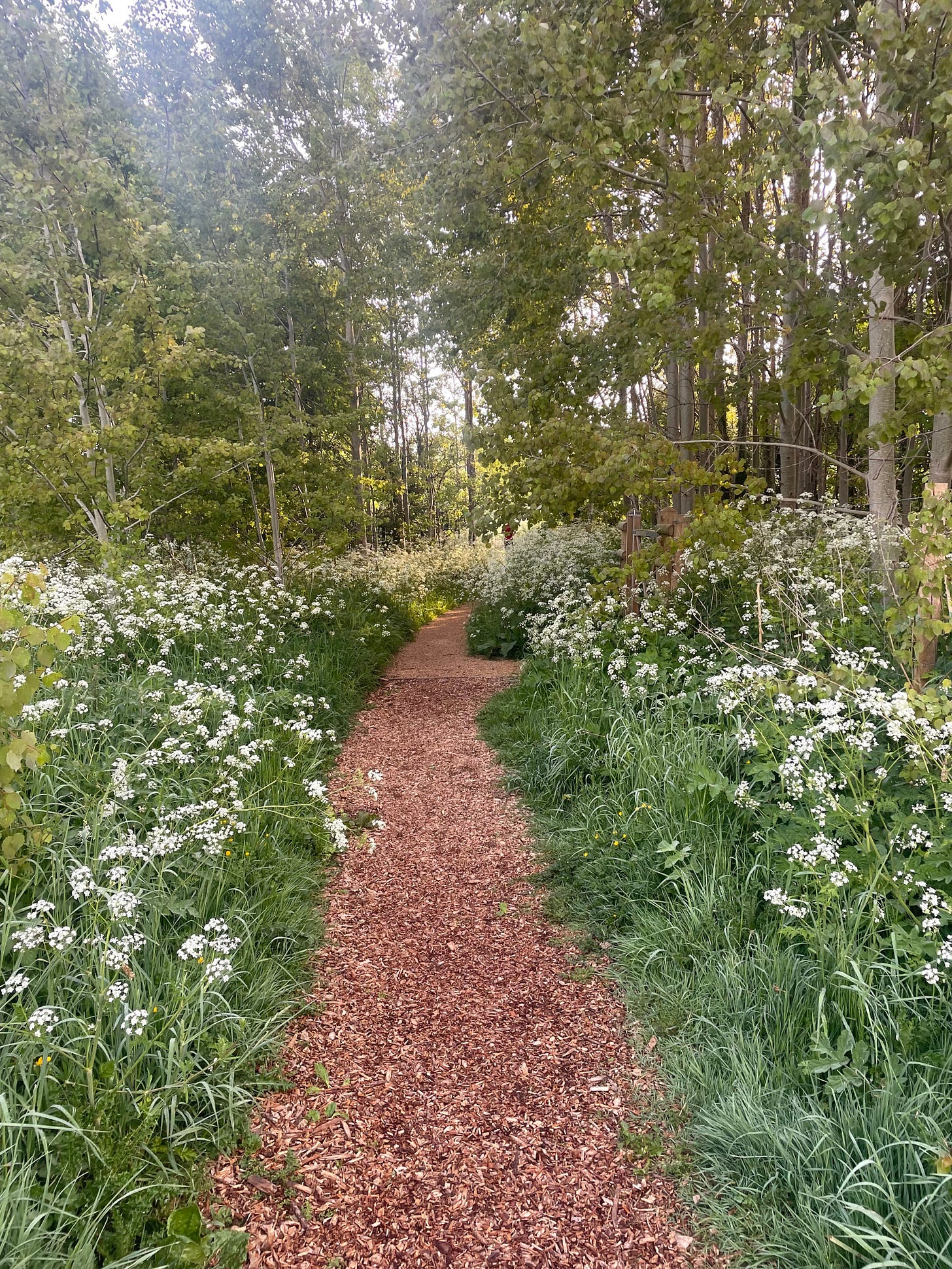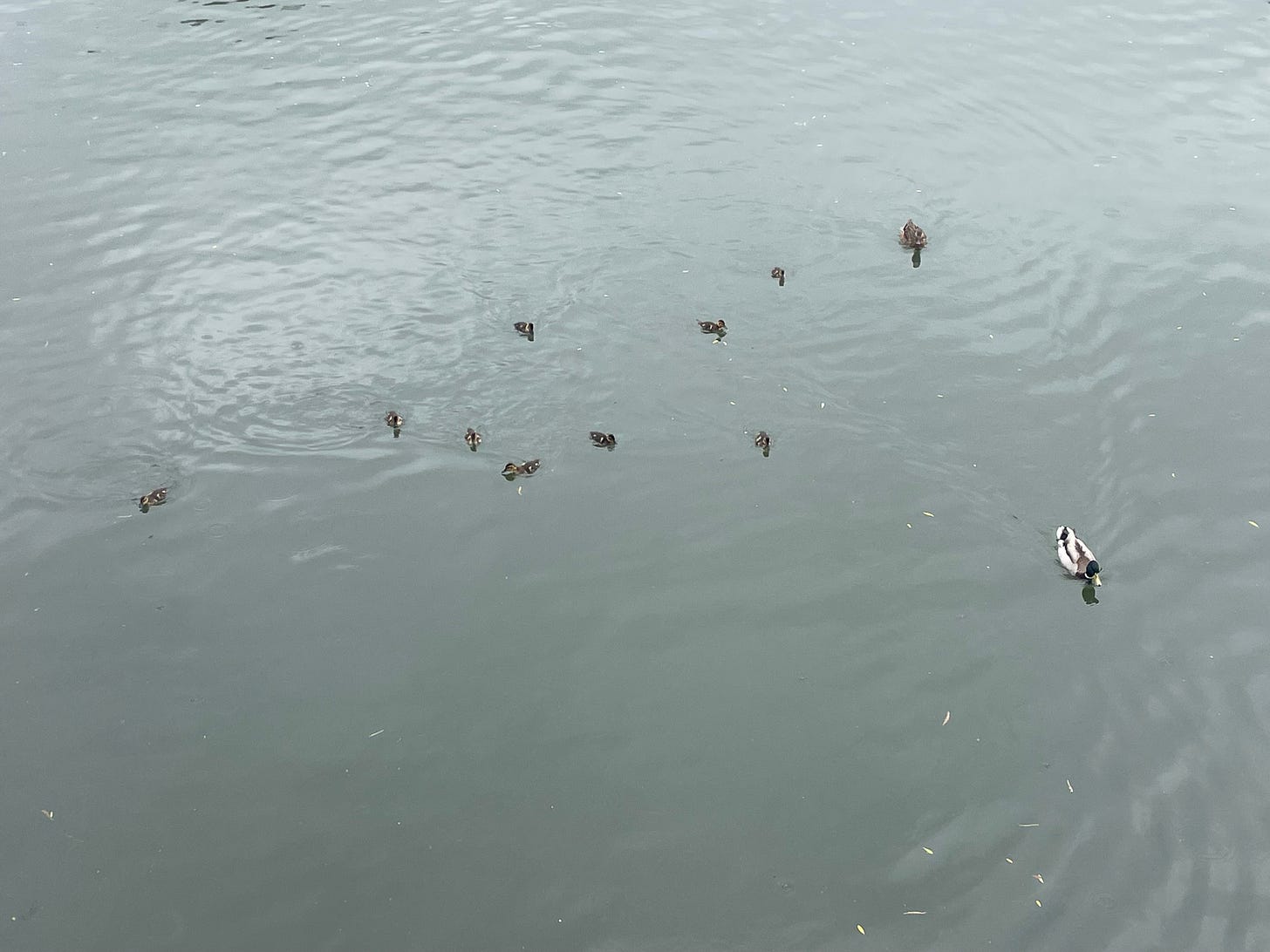Walkarounds
It was spitting with rain as I waited for the gate to open. In the past, I might have felt a low hum of frustration at the delay, but more often these days I’m content to pause and let the world to show itself to me. I had a meeting to make, but there was no way round that would be any quicker. I leaned against the railings and watched.
My main achievement in May may have been figuring out a new way in to work. My office sits just off a busy ring road, with a river forming a barrier to the south. Even though I have found a cross-country route that makes my drive more pleasant, the final part of the journey has always made me sad, forcing me to sit in two lanes of fierce traffic and traverse a tricky roundabout crammed with other furious commuters.
It took some sideways thinking to find my solution: to realise I could park on the ‘wrong side’ of the river and cross it on foot at Sandford lock to reach my workplace. The total time it takes me to travel from door to door has increased by about ten minutes, but half my trip is now spent on foot rather than stuck in a car. I have discovered a patchwork of paths that weave almost all the way to my office and instead of being engulfed by diesel fumes I’m smothered in cow parsley pollen by the time I reach my desk. This is all a huge win for my physical and mental health and I’ve been feeling incredibly smug about it all.
Until the day that the lock swung into action, just before I reached the crossing point. It was half-term holiday of course, and a series of canal boats and cruisers filled with people with more leisure than me had lined up to navigate this infamous part of the Thames (a little further up, the weir or the ‘Sandford lasher’ is renowned being ‘a very good place to drown yourself in’, as Jerome K Jerome puts it in Three Men in a Boat*).
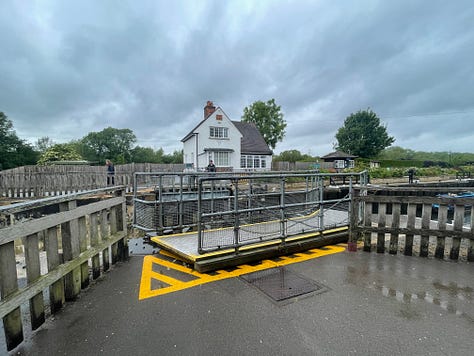
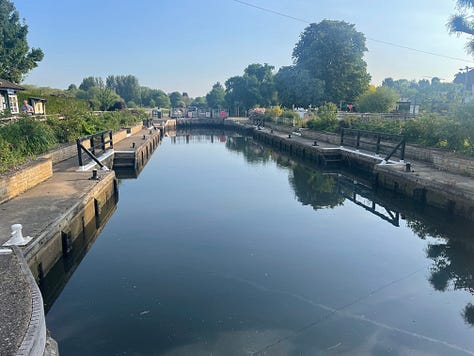
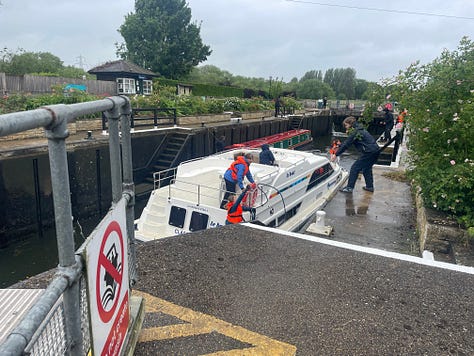
There is generally a mild sense of peril at any lock site, where sluices churn to raise or lower the water levels and boats pass through narrow channels. Dogs and children and different languages added to the bustling and slightly chaotic scene as I stood in the rain, waiting for my turn to access the bridge. When the gates returned to position and I was able to continue on my way, I knew I could still make it in time for my meeting. But I paused a while as the river traffic disappeared, and watched a pair of ducks and their young scatter across the river’s surface.
What are the walkarounds and workarounds that might add pleasure or opportunities for contemplation for you today?
Consciously opt for a variation in a journey you usually make - perhaps tick the ‘no motorways’ box on Google maps as you take a road trip, or figure out a back route or diversion in a walk you often take. Does anything unexpected happen? Write about it.
Crossing a river is an excellent starting point for a story. Has the bridge broken? Wil you try and swim or is there a stranger in a boat to help out? What is the greater risk? Play around with this scenario for a few paragraphs.
Is there a piece of writing or a poem you have been working on that isn’t quite right? Try starting it somewhere different. Take a new path. Don’t be afraid to experiment - there’s always another way.
*Jerome’s observation was borne out by the two deaths reported there in 1921, of Rupert Buxton and Michael Llewelyn-Davies, also known as the inspiration for J.M. Barrie’s Peter Pan.


